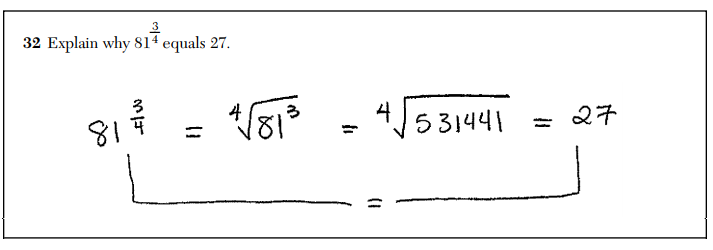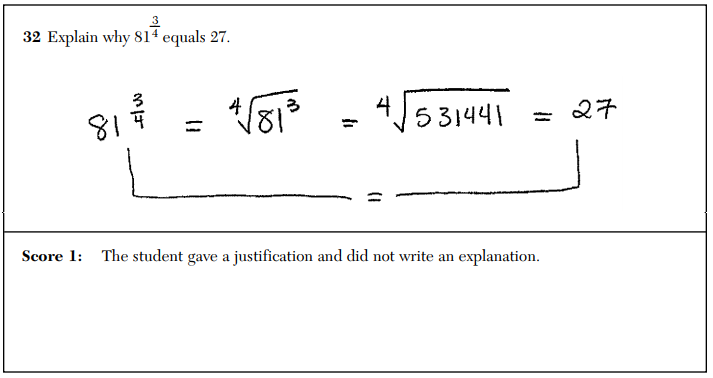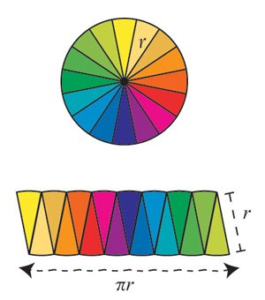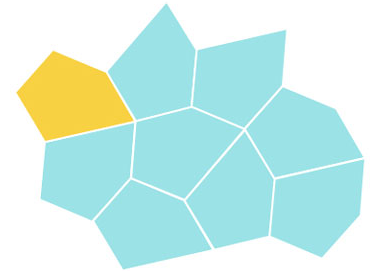This has quickly become my new least-favorite kind of Regents exam question. (This is number 32 from the January, 2018 Algebra 2 Regents exam.)
What can you say here, really? They’re equal because they’re the same number. Here’s a solid mathematical explanation. Right?
Wrong.
According to those who write the scoring guidelines for these exams, this is a justification, not an explanation. Because students were asked to explain, not justify, this earns only half credit.
This is absurd. First of all, this is a perfectly reasonable explanation of why these two numbers are equal. This logical string of equalities explains it all. This clear mathematical argument demonstrates what it means to raise something to the power 3/4.
Second, whatever it is that differentiates an “explanation” from a “justification” in the minds of Regents exams writers, it’s never been made clear to test-takers or the teachers who prepare them. A working theory among some teachers is that “explain” just means “use words”. Setting aside how ridiculous this is, if this is the standard to meet, students and teachers need to be aware of it. It needs to be clearly communicated in testing and curricular materials. It isn’t.
Third, take a look at what the the test-makers consider a “complete and correct response”.
In this full-credit response, the student demonstrates a shaky mathematical understanding of the situation (why are they using logarithms?) and writes a statement (“81 with four roots gives you 3”) that, while on the right track, is in need of substantial mathematical refinement. Declaring this to be a superior response to the valid mathematical argument above is an embarrassment.
These tests are at their worst when they encourage and propagate poor mathematical behavior. We deserve more from our high-stakes exams.
Related Posts







